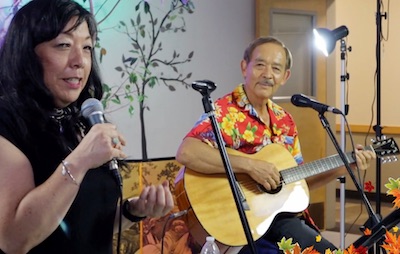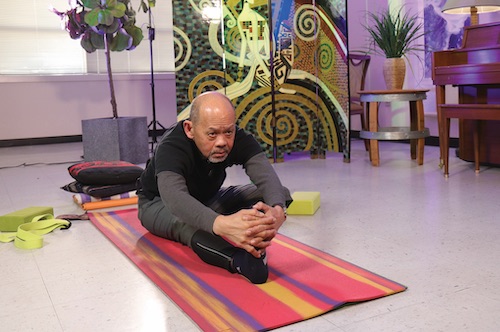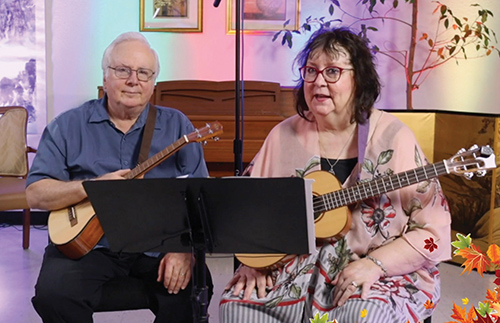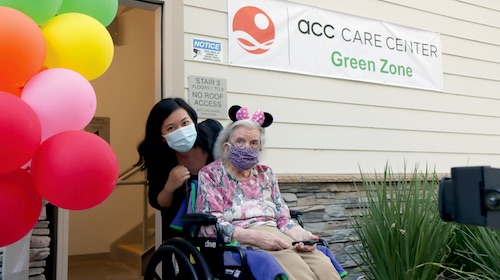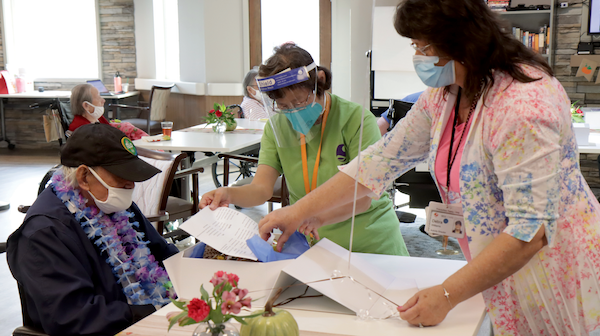By Darrick Lam and Jean Shiomoto
2021 began with, as some would say, a shot in the arm as residents and frontline workers at ACC Care Center, Greenhaven Terrace, and Maple Tree Village got their COVID-19 vaccines. The vaccine took less than a year to develop, a fantastic triumph of science and technology, showing what is possible when government, companies, and organizations work together.
As our community continues to adjust to life with vaccinations and the COVID-19 pandemic, ACC Senior Services is now seeing the light at the end of the tunnel. ACC has started putting together a COVID recovery plan on visitation guidelines for in-room, indoor, outdoor, and large indoor communal spaces.
The pandemic has drawn attention to what it means to age in place. This year, ACC will develop a plan to determine which home and Community-Based Services (HCBS) meet the needs of people who want to get person-centered care in their home or community, instead of in an institutional setting. ACC is working on a speaker series to invite experts in HCBS to help ACC and the community learn about these services. In early March, Jeannee Parker Martin, President & CEO for LeadingAge California, conducted a workshop for our Board members and volunteers on “Trends & Strategies for Home & Community-Based Services.” In early April, we will have a special presentation by the California PACE Association on “The Program of All-Inclusive Care for the Elderly. We will continue to keep you posted on the speaker series and the development of the plan.
Even before the pandemic, ACC and Meals on Wheels by ACC recognized people’s desire to maintain their autonomy and independence at home. Today, together, we provide transportation, home nutrition, and referral services to meet their needs, all of which we consider a good start towards planning for HCBS.
In January, Governor Gavin Newsom released California’s Master Plan for Aging (MPA), which Darrick helped develop as a member of the MPA Stakeholder Advisory Committee. The article on page 2 explains the critical features of the state’s 10-year plan. As part of MPA implementation, Darrick has been appointed to the California MPA Equity In Aging Advisory Committee, which focuses on applying an equity lens thoughtfully and thoroughly to MPA implementation activities and the California Department of Aging’s services and programs, particularly those in response to COVID-19.
Darrick plays a significant role in planning the American Society on Aging’s Diversity Summit On Aging Annual Conference scheduled in early April. He will serve as the host for a panel featuring Jennie Chin Hansen, RN, Commissioner at Healthy California for All Commission; Professor Fernando Torres-Gil, Ph.D., first Assistant Secretary for Aging at the U.S. Department of Health & Human Services – Administration on Aging; and Percil Stanford, Ph.D., President at Folding Voice LLC.
We want to take this opportunity to welcome Deborah Kania as the new administrator for ACC Maple Tree Village. Deborah is a Registered Nurse whose career has spanned over 35 years in the health care field, working with seniors in various settings. Her experience includes skilled nursing, acute hospital, hospice, and PACE (Programs of All-Inclusive Care for the Elderly). She was, in fact, the early Director of Nurses at ACC Care Center back in the day!
In recognition of National Women’s Month, we want to acknowledge the many women of ACC, past and present, who have made many significant contributions and tirelessly work for and on behalf of ACC as Administrators, managers, staff, and supporters. One is Donna L. Yee, who led ACC for 17 years before her retirement at the end of 2017. As ACC navigated through the COVID-19 pandemic in 2020, Melanie Segar, ACC’s Chief Operating Officer, and Tamara Kario, ACC’s Care Center Administrator, worked diligently to keep residents and staff safe in all of ACC’s facilities. As there is not enough space to name everyone, we give a shout out to all the women of ACC
ACC Online Programming has enjoyed a strong run since it began in October 2020. To date, we have live-streamed more than 150 class sessions, workshops, concerts, and community meetings on YouTube, Facebook, and Zoom. We have seen a rise in attendance from people both inside and outside Sacramento! Help us continue to keep our seniors active and engaged by supporting ACC. To donate, go to accsv.org/donate or contact Thyan Pham at tpham@accsv.org.
Finally, on Thursday, May 6, ACC will host its Big Day of Giving Virtual Telethon. Building on the immense success we had last year, ACC is looking to raise at least $100,000. If you would like to be a supporter or a performer in this year’s event, contact Thyan Pham at tpham@accsv.org. See you on May 6!









